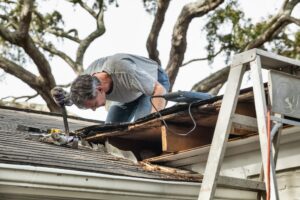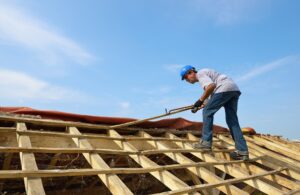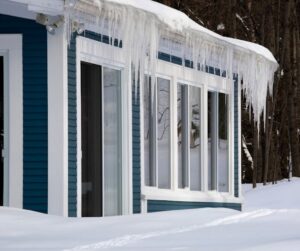One way to make your home more energy efficient is to ensure optimal roof performance. You enhance energy conservation with well-maintained and appropriate roof materials. Conversely, less-than-ideal materials or practices make your roof a channel for wasteful heat gain or loss. Read on to discover five roof tips to save energy and reduce utility bills.
1. Ventilate Your Attic
Without enough ventilation, the attic traps hot air in the upper part of your house. During the extreme summer heat, hot air can pass through the insulation to other areas of your home. But ventilation enhances the appropriate airflow between your attic and the exterior house parts. As a result, indoor temperatures become regulated, and the workload on your AC declines.
You can install intake vents at the lower parts of your roof and exhaust vents in the upper section. The intake vents allow cool air to flow inside the attic, while exhaust vents allow hot air to rise and escape. The cycle of cold air intake and warm air release prevents the buildup of too much heat, which then flows to your inner space.
2. Insulate Your Attic
The quality of your attic insulation determines how much energy, if any, your roof saves. With poor insulation, your attic will trap heat during summer and overwork your air conditioner. Also, during winter, a poorly insulated attic allows cold air to flow into the house and increases the energy your furnace needs to heat the home.
Attic insulation is simple and delivers immediate benefits. It creates a barrier that lowers heat transfer between your house’s outer and inner sides. As a result, your AC will use less energy to keep your home’s temperature comfortable. Some insulation materials include cellulose, fiberglass, cotton batting, and home foam insulation.
3. Choose the Right Colors
Dark colors absorb, while lighter shades reflect the sun’s heat away from your home. Dark-colored roofs and shingles cause the heat buildup in your attic to increase significantly. If your attic and roof lack proper insulation, the heat will spread to your indoor space and cause discomfort during summer.
Light-colored shades are ideal in warmer climates, while darker counterparts are better for cold regions. Dark roofs release heat faster if you live in a snowy region, so snow quickly melts off. Finally, if you live in a warm area and want to shift to a dark roof, you do not have to go for a replacement. Instead, add a protective coat that reflects light away from your roof.
4. Upgrade to Energy-Saving Materials
The suitable roof materials save you up to 30% in energy consumption. Materials that conserve energy are highly reflective to reflect the sun’s rays and lower your roof’s temperature. You can also add elastomeric rooftops to increase reflectivity and reduce energy use.
Examples of suitable roof materials are:
- Painted metal, which is a bit expensive but has a very high energy efficiency
- Slate tiles, which have a natural light shade that reflects heat naturally
- Asphalt shingles and concrete
5. Install a Radiant Heat Barrier or Solar Panels
Radiant barriers consist of highly reflective materials that reflect rather than absorb radiant heat. For example, you could use recycled tinfoil materials or plywood as a barrier to heat. The radiant barrier reduces cooling loads during the summer to ensure your AC does not overwork.
Solar panels absorb the sun’s heat to keep the roof cool. The panels also convert sunrays to usable energy, which gives you an alternative to electricity. So you get double the benefits of a reduced AC workload and cheaper energy sources for different home activities.
With the energy efficiency tips above, do not let your roof be a cause for energy loss. Contact Precise Roofing and Contracting LLC if you need help identifying the right roof based on your location. You will also get quality new or replacement energy-efficient roofs and excellent roofing services.





